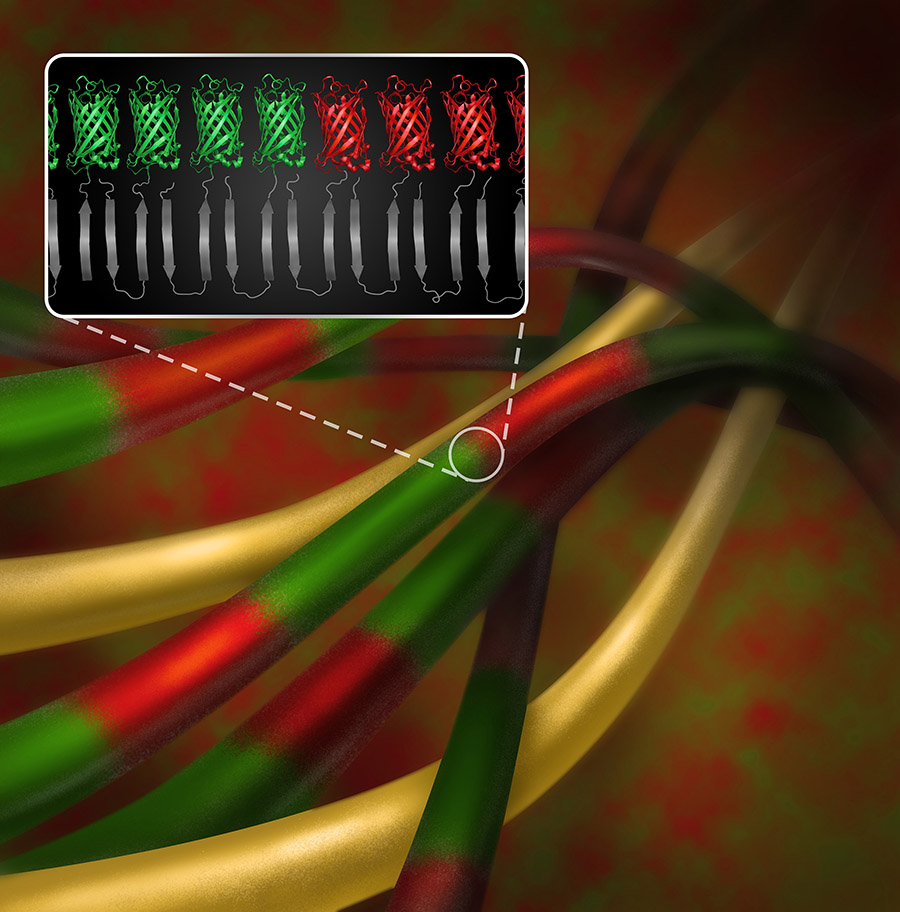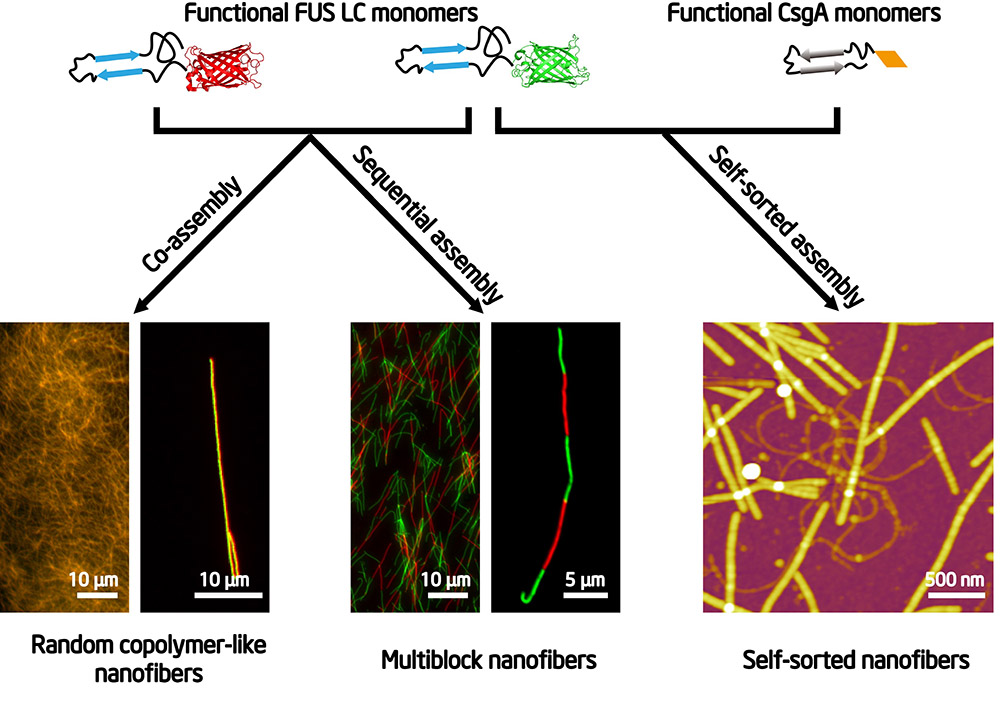SPST Assistant Professor Zhong Chao’s research team recently developed diverse one-dimensional supramolecular nanostructures with distinct functionalities by coupling a modular genetic strategy with kinetically controlled complex supramolecular self-assembly. Their research work opens new doors to designing protein-based supramolecular materials with enriched diversity in both structure and functionality. The results were recently published in ACS Nano, an international journal focusing on nanoscience and nanotechnology research at the interfaces of chemistry, biology, materials science, physics and engineering.
Self-assembling supramolecular nanofibers, common in the natural world, are of fundamental interest and technical importance to both nanotechnology and materials science. Despite important advances, synthetic nanofibers still lack the structural and functional diversity of biological molecules, and the controlled assembly of one type of molecule into a variety of fibrous structures with wide-ranging functional attributes remains challenging.
Assistant Professor Zhong’s research team harnessed the low-complexity (LC) sequence domain of fused in sarcoma (FUS) protein, an essential cellular nuclear protein with slow kinetics of amyloid fiber assembly, to construct random copolymer-like, multi-block and self-sorted supramolecular fibrous networks with distinct structural features and fluorescent functionalities. Owing to their slow assembly kinetics and well-controlled formation conditions, these nanofibers can be easily and hierarchically generated across multiple scales, ranging from single fiber and dense fiber networks to bulky hydrogels. Furthermore, using these fibrous structures as organic templates, they have achieved structure-dependent assembly of various ligand-decorated nano-objects with distinct spatial control at the fibrous level. Such spatially controlled assembly of nano-objects with structural dependence, along with the scalable feature of the self-assembly system itself, can potentially generate higher-order organization of nano-objects with subtle structural differences and may lead to diverse applications in nanoplasmonics, nanocatalysis and nanobioelectronics.Their strategy, integrating a modular genetic design with kinetically controlled complex fiber self-assembly, allows for elaborate structural and functional diversity of self-assembled systems. In addition, it provides a practical approach to construct tailor-made 1D supramolecular nanoarchitectures with a wide range of structural attributes and functionalities emerging from simple building blocks.
The paper’s first authors are An Bolin and Wang Xinyu, first and third-year Ph.D. students in SPST. Dr. Zhong is the main corresponding author. Other co-authors contributing to this paper include Dr. Liu Cong and his student Gui Xinrui (Interdisciplinary Research Center on Biology and Chemistry), Dr. Zhong Guisheng and Dr. Liu Yan and Chu Cenfeng (iHuman institute of ShanghaiTech) and Dr. Timothy K. Lu (MIT). The study received support from Shanghai Pujiang Program, the “Dawn” Program of Shanghai Education Commission and National Natural Science Foundation of China with start-up funding support from ShanghaiTech University.
Read more at:http://pubs.acs.org/doi/abs/10.1021/acsnano.7b02298

The low-complexity (LC) sequence domain of fused in sarcoma (FUS) protein, an essential cellular nuclear protein with slow kinetics of amyloid fiber assembly, is harnessed to construct diverse fibrous networks with distinct structural features and fluorescent functionalities. The image here contains multiblock supramolecular nanofibers (with alternate red and green segments) and random copolymer-like nanofibers (in yellow). The multiblock and random copolymer-like nanofibers were prepared based on sequential and simultaneous complex assembly of the two genetically engineered FUS LC monomers, EGFP-FUS LC and mCherry-FUS LC monomer, respectively.

Diverse Supramolecular Nanofiber Networks made by Complex Assembly of Functional Low-Complexity Domains, from left to right: random copolymer nanofibers, multi-block nanofibers and self-sorted nanofibers.
- About
- News
- Faculty
- Research
-
Academics
- School of Physical Science and Technology (SPST)
- School of Life Science and Technology (SLST)
- School of Information Science and Technology (SIST)
- School of Entrepreneurship and Management (SEM)
- School of Creativity and Art (SCA)
- Institute of Humanities (IH)
- School of Biomedical Engineering (BME)
- Shanghai Institute for Advanced Immunochemical Studies (SIAIS)
- iHuman Institute
- Institute of Mathematical Sciences (IMS)
- Center for Transformative Science (CTS)
- Institute of Carbon Neutrality (ICN)
- Shanghai Clinical Research and Trial Center
- Tech Transfer
- Global
- Campus Life

